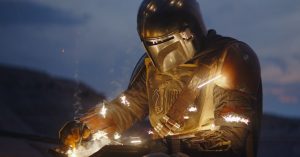With a pair of 200-kilowatt motors sending power to all four wheels, Sony’s first car can go from 0 to 62 mph in 4.8 seconds. It can hit a top speed of 149 mph, even though it weighs a hefty 5,180 pounds. The company hasn’t revealed how far the all-electric concept can go between charges, but that doesn’t much matter. Nor, really, do the rest of these specs, since Sony isn’t going to produce this car, which it revealed this week at CES. What’s important and interesting about the Vision-S is how it emphasizes the role Sony can play in an age where performance matters far less than how a vehicle treats its passengers.
The rapid shift of the auto industry toward self-driving and connected vehicles has pulled players like Google, Apple, and Amazon into the car business, mostly with regard to infotainment systems. General Motors plans to use Android software in its future vehicles; Amazon just landed Lamborghini as the latest user of its embedded Alexa system.
Stay in the know with our Transportation newsletter. Sign up here!
Sony already has a place in the auto industry. It provides speaker systems to a variety of automakers. Toyota and its luxury arm, Lexus, use Sony’s CMOS image sensors in some models to underpin automatic emergency-braking features. But now the company is looking to ramp up its offerings. “We will accelerate our efforts to contribute to the future of mobility,” president and CEO Kenichiro Yoshida said at a press conference in Las Vegas. “This prototype embodies our contribution.” So it’s no surprise to see that the Vision-S plays up two Sony strengths: consumer entertainment and sensors.
Like most of today’s concept cars, this one is packed with screens ready to stream Sony’s voluminous collection of music and movies.
Courtesy of SonyThe first is the easier to see here. The Vision-S features a bevy of screens, including one that stretches the length of the dashboard, like that in the upcoming Byton M-Byte SUV. These, of course, offer access to the music, games, and movies in the company’s vast library. (The latter two are for when, as Sony says, you are “relieved from car operations.”) “We believe that the evolution of mobility will also redefine cars as a new entertainment space,” Yoshida said.
A 5G connection will ensure everything comes through with nary a moment of buffering. The two backseat passengers each get their own headrest-mounted screen. With speakers all around the car, including one in each seat, everyone can enjoy Sony’s immersive “360 Reality Audio” system, which debuted at CES 2019.
Sony, which won’t actually build the car, worked with an auto industry supplier to produce a concept that can really drive.
Courtesy of SonyLess eye-catching but just as vital are the 33 sensors placed around and within the sedan: a mix of cameras, radars, ultrasonics, and lidar. More than half of those will watch the car’s surroundings, allowing it to drive itself on the highway (with human supervision) and autonomously find a spot in a parking lot. A built-in dash cam records your life on the road, and other cameras pull in feeds for the digital rearview and side-view mirrors. A neat trick there: If some dope behind you leaves their high beams on, the Vision-S can automatically dim the brightness of the display. A slightly creepier one: As you approach the car, the cameras will recognize you and tune the car’s settings to your liking. Naturally, one camera will watch the folks inside the car. If the driver’s getting sleepy, the car can suggest they take a break. If passengers nod off, it can recline their seats and turn up the heat to keep them cozy.
Sony built the Vision-S with help from industry supplier Magna to improve its understanding of the car as a whole, Yoshida said. But he made clear Sony isn’t about to start stamping its own steel. (Making cars is a tough game; just ask James Dyson.) And while little of the concept in Las Vegas is groundbreaking—big screens and piles of sensors are becoming increasingly common in today’s cars—it’s a signal that Sony wants to carve out a bigger, wider, and perhaps more lucrative role in the car business of the future. You may never get to ride in the Vision-S, but someday it could be Sony providing the tools to keep you entertained, safe, and on the move.
More From CES 2020
- Liveblog Day 3: Get the latest from Las Vegas
- Gallery: 8 more of the smartest things we’ve seen at CES
- Bell and Hyundai soar into the air taxi race
- Amazon doubles down on Ring partnerships with law enforcement
- Ivanka Trump’s future of work isn’t for workers
- The Inventors Hall of Fame honors pioneering brainiacs
- Looking for more? Check out our full coverage here
- 📩 Sign up for the Gadget Lab newsletter for news and reviews you can use



